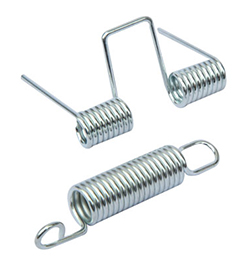科学网实验室介绍:Dolf Weijers Lab (荷兰瓦赫宁根
一直准备开一个新的、系统性介绍各个实验室的栏目,之前一直踌躇不前因为害怕自己邀请不到大牛来介绍自己实验室近些年的研究概况以及未来的研究方向。我的初步设计是先介绍一下实验室的整体方向以及近五年、十年左右的研究成果,然后引出目前正在开展的项目以及未来的研究方向。然而,后面一块内容可能会涉及各自实验室对于未来的核心计划,所以有点敏感。但是这一块内容对于广大正在准备研究生考试、研究方向以及导师选择的学生来说十分急需;同时,对于刚出师寻求自己研究方向的青年研究者也具有很高的参考价值;另外,对于实验室来说也可以有助于招到切合实验室研究方向的研究生或博后、青年教师。所以,我还是厚着脸皮,借着待了一年快走的架势,委婉的问了一下我在瓦大的导师Dolf Weijers是否愿意给我写一份这样的实验室介绍短文。所幸,Dolf很爽快的答应了我的要求,第二天就抽空写了有关“Dolf Weijers Lab”的介绍(p.s. 真是百忙之中抽空写的,当时看了一下他的schedule,满满当当的日程安排,非常感谢Dolf的支持)。第一次开这个栏目,现将Dolf发给我的介绍原文贴在下面,并翻译了一份中文版方便大家阅读,另外相关文章链接也会贴在文末,以飨读者。
The Dolf Weijers lab at Wageningen University (the Netherlands) focuses on two connected research areas: (1) early plant embryogenesis and (2) auxin hormone biology. In both areas, the ambition is to generate fundamental understanding of the biochemical, cellular and evolutionary principles that underlie the behavior of biological systems.
Dolf Weijers实验室隶属于荷兰的瓦赫宁根大学,主要关注两个方面的研究:1)早期植物胚胎发生;2)植物激素生长素的生物学。在这两个研究领域,Dolf实验室的主要研究目标都是进一步理解生物系统行为在涉及到生化、细胞以及演化层面的基本原理。
Recent breakthroughs from the team are:
团队最近的突破:
1) Use of the Arabidopsis embryo as a model for cell type specification and tissue patterning. We have developed transcriptomes of isolated early embryos and their cell types (e.g. Palovaara et al., Nature Plants 2017), and used these to describe the transcriptomic changes associated with cell type specification (e.g. ground tissue and vascular tissue – Möller et al., PNAS 2017; suspensor – Radoeva et al., Plant Cell 2019). We have also mined these transcriptome datasets to identify transcriptional regulators of tissue patterning (e.g. TMO5/LHW – De Rybel et al., Science 2014; TMO7 – Schlereth et al., Nature 2010).
1) 利用拟南芥胚胎作为模型,研究细胞类型特化以及组织模式建成。我们分离了早期胚胎,并获得了早期胚胎的转录谱以及细胞类型(详见Palovaara et al., Nature Plants 2017)。通过这些数据,我们能够描述与细胞类型特化相关的转录谱变化,比如ground tissue(内皮层endodermis和皮层cortex)与vascular tisssue(中柱鞘pericycle、木质部xylem和韧皮部phloem)(详见Möller et al., PNAS 2017)以及胚柄(Radoeva et al., Plant Cell 2019)。我们进一步挖掘了这些转录组数据,鉴定了组织模式建成的转录调控因子,比如TMO5/LHW(详见De Rybel et al., Science 2014)和TMO7(Schlereth et al., Nature 2010)。
2) Developmental of the Arabidopsis embryo as a model for cell biological investigation. We have developed a framework for the control of cell division orientation by both geometric and genetic cues (Yoshida et al., Dev. Cell 2014), and established a set of subcellular fluorescent markers for studying cellular reorganization in the young embryo (Liao and Weijers, Plant J., 2018).
2) 利用拟南芥胚胎发育作为模式进行细胞生物学研究。我们开发了一个通过几何和遗传线索控制细胞分裂方向的框架(详见Yoshida et al., Dev. Cell 2014),并建立了一套用于在年轻的胚胎中研究细胞层面重构的亚细胞荧光标记(详见Liao and Weijers, Plant J., 2018)。
3) Identification of new cell polarity components. We have identified the SOSEKI protein family. These are proteins that robustly localize to polar cell edges, and can impact on cell division orientation. We have shown that these proteins follow global polarity coordinates across the organism (Yoshida et al., Nature Plants 2019). We found that these SOSEKI proteins are ancient poarity proteins, conserved in Bryophytes (Marchantia and Physcomitrella), and that they share a polymerization domain with animal polarity regulators. We showed that protein polymerization is a key property underlying the ability of SOSEKI proteins to polarize, and to recruit another protein to cell edges (van Dop et al., Cell 2020).
同类文章排行
- 2019年广东公务员考试面试热点练习(62)
- 2019年广东公务员考试面试热点练习(57)
- 津巴布韦总理称上周车祸是意外
- 持居留条回国 旅游千万不要打擦边球
- 英国计划斥资4000万镑帮白领找工作
- 王健林又悄悄卖了几家万达广场!保险、信托接
- 2019年深圳公务员考试公告
- 俄罗斯醉酒外交官在飞机上与人打架迫使飞机返
- 2019年广东公务员考试面试热点练习(56)
- 2020年广东公务员面试模拟题:大学生贷款享受优惠政策
最新资讯文章
- 梅德韦杰夫承认俄罗斯经济被危机重创
- 伊朗又试射了一枚远程导弹
- 朝鲜最高司令部要求做好一切战斗准备
- 持居留条回国 旅游千万不要打擦边球
- “外交为民”新举措 罗马地区侨团联络会正式成
- 以色列称伊朗已跨越核武技术门坎
- 美军文件公开宣称以色列为有核国家
- 俄罗斯专家称中国应向北约开放瓦罕走廊
- 伊拉克发生自杀式袭击28人死亡57人受伤
- 关塔那摩囚犯称英军情五处串通CIA对其酷刑
- 奥地利兽父案下周开审 乱伦父刑期或少于10年
- 苏丹总统:决不向殖民主义和国际刑事法院屈服
- 朝鲜切断朝韩陆路通行线 620名韩国人被困当地
- 日本首相麻生再次表示美国对钓鱼岛立场没变
- 委内瑞拉将建立人民公社大食堂
- 马达加斯加军营哗变 士兵拒绝向民众开枪(组图
- 美韩展开12天联合军演 7艘宙斯盾舰参加
- 日本发明新型遥控器 脸部肌肉可遥控家电(图)
- 英国计划斥资4000万镑帮白领找工作
- 世行报告称全球经济将现二战后首“负”





